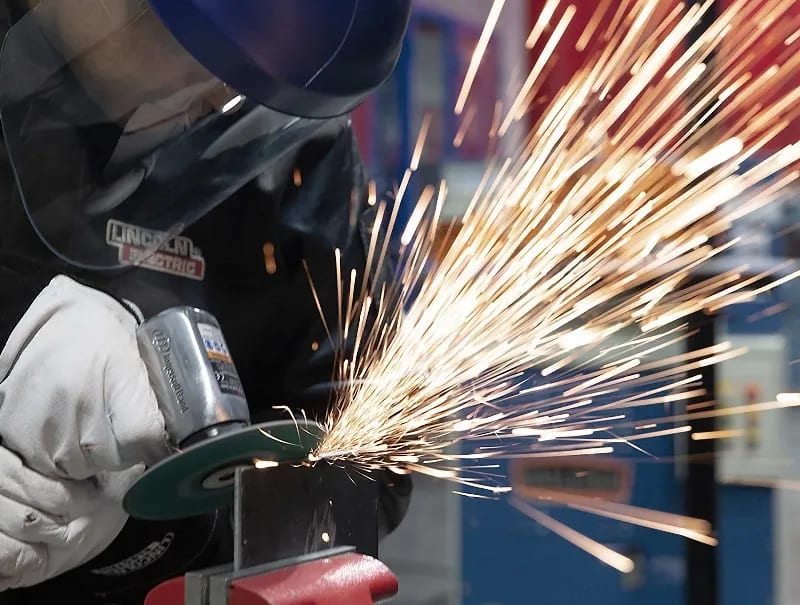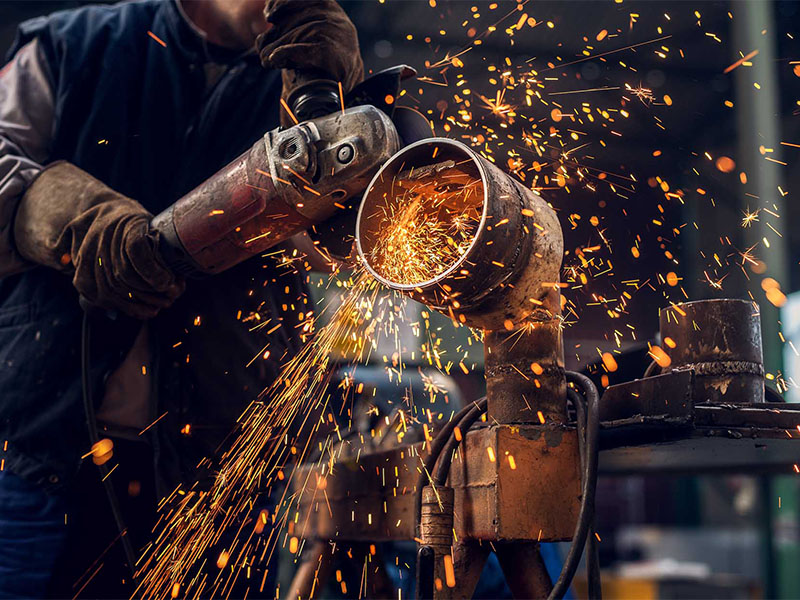Top 5 weld defects tackled by Belgrade Welding experts
Wiki Article
Typical Welding Repair Service Issues and Exactly How to Address Them Efficiently
Welding repair services commonly encounter a range of issues that can endanger the stability of the end product. Common problems include poor infiltration, porosity, and misalignment, amongst others. Each flaw presents distinct difficulties that need specific strategies for resolution. Recognizing these problems is necessary for welders aiming to enhance their abilities and results. This discussion will certainly discover these typical welding fixing problems and reliable methods to resolve them.Insufficient Penetration
Insufficient penetration occurs when the weld metal fails to fully fuse with the base product, resulting in weak joints and possible architectural failures. This problem typically stems from inadequate heat input, incorrect electrode angle, or improper welding rate. Welders may run into insufficient infiltration due to a mistake of the needed criteria for a details material thickness or kind. Furthermore, contamination on the base product's surface area can hinder efficient bonding, worsening the trouble. To address poor penetration, welders must ensure suitable settings on their equipment and keep a clean work surface. Routine evaluation of welds is suggested to identify any kind of shortages early, allowing for timely corrections and the prevention of jeopardized architectural honesty in bonded assemblies.Porosity
Porosity is a typical issue in welded joints that shows up as tiny gas bubbles trapped within the weld metal. This issue can compromise the stability of the weld, bring about lowered stamina and possible failing under anxiety. Montana Mobile Welding and Repair Belgrade. Porosity typically occurs from contamination, moisture, or improper welding techniques, which permit gases to escape right into the liquified weld pool. To address porosity, welders ought to guarantee proper surface area prep work, keep a clean working atmosphere, and utilize ideal welding specifications. Additionally, selecting the right filler product and securing gas can minimize gas entrapment. Normal evaluation and testing of welds can assist determine porosity early, guaranteeing prompt restorative activities are taken, thereby maintaining the top quality and dependability of the bonded structureMisalignment
Misalignment in welding can develop from different elements, including inappropriate configuration and thermal expansion. Recognizing the root triggers is vital for effective resolution. Numerous adjustment methods are readily available to straighten components and assure architectural stability.Causes of Imbalance
Welding imbalance often stems from a selection of underlying concerns that can jeopardize architectural stability. One key reason is inappropriate fit-up of components before welding, which can bring about spaces and uneven surface areas. Variants in thermal growth throughout the welding procedure can likewise lead to distortion, especially if the materials being signed up with have different coefficients of expansion. Additionally, poor fixturing and clamping might fall short to hold elements securely in area, causing activity throughout welding. Badly kept devices, including welding equipments and devices, may present incongruities in the weld bead, additional adding to imbalance. Ultimately, driver mistake, stemming from inadequate training or experience, can also play a substantial role in creating misaligned welds.Correction Techniques Readily Available
Addressing misalignment properly needs a combination of corrective methods tailored to the certain issues handy. One typical method is making use of jigs or fixtures to hold parts in the appropriate placement during welding, guaranteeing consistent positioning. Furthermore, preheating the materials can assist decrease distortion and improve fit-up. For considerable misalignment, mechanical realignment methods, such as using hydraulic jacks or clamps, can be employed to remedy the position before welding. Post-weld warmth therapy might likewise be needed to relieve anxieties brought on by misalignment. Careful inspection and adjustment throughout the arrangement stage can prevent imbalance issues from ending up being significant issues, advertising a smoother welding process and boosting general structural stability.Distortion
Distortion is an usual obstacle in welding that can develop from numerous elements, including uneven cooling and heating. Understanding the causes of distortion is necessary for implementing effective prevention strategies. Resolving this concern not just boosts structural honesty but also boosts the overall top quality of the weld.Causes of Distortion
When based on the intense warm of welding, products typically undertake changes that can cause distortion. This phenomenon primarily develops from thermal growth and contraction throughout the welding procedure. As the weld area warms up, the product increases; upon cooling, it gets, which can produce inner stress and anxieties. Furthermore, irregular home heating across a workpiece can aggravate these stresses, causing bending or bending. The kind of material also plays a substantial function; metals with differing thermal conductivity and coefficients of growth might respond in different ways, resulting in unforeseeable distortions. Furthermore, bad joint design and insufficient fixturing can contribute to misalignment throughout welding, enhancing the probability of distortion. Understanding these reasons is vital for reliable welding fixing and prevention strategies.Avoidance Techniques
Efficient prevention methods for distortion during welding concentrate on managing heat input and ensuring correct joint style. Keeping a regular heat input helps to lessen thermal development and tightening, which can lead to distortion. Using techniques such as preheating the work surface can also decrease the temperature gradient, promoting consistent heating. Furthermore, choosing appropriate joint designs, such as T-joints or lap joints, can boost security and lower stress concentrations. Carrying out correct fixturing to protect the work surfaces in area better help in keeping positioning throughout the welding procedure. Finally, staggered welding series can disperse warm extra evenly, avoiding local distortion. By applying these approaches, welders can greatly decrease the probability of distortion and improve the total top quality of their welds.Fracturing
Splitting is a common problem run into in welding repairs, commonly resulting from various variables such as inappropriate cooling prices, product selection, or poor joint preparation. The event of splits can substantially endanger the stability of the weld, leading to prospective failings throughout procedure. To resolve this issue, welders should first analyze the origin, ensuring that materials are compatible and appropriately picked for the particular application. Additionally, regulating the cooling rate throughout the welding procedure is crucial; quick cooling can cause tension and result in fracturing. Proper joint layout and prep work also contribute to minimizing the danger. Implementing these approaches can enhance weld quality and resilience, inevitably reducing the possibility of fracturing in completed weldments.
Incomplete Blend
A considerable concern in welding fixings is incomplete blend, which happens when the weld metal does not sufficiently bond with the base material or previous weld passes - Montana Mobile Welding and Repair Belgrade Welding. This defect can cause weak points in the joint, possibly jeopardizing the integrity of the welded structure. Variables adding to insufficient blend include insufficient heat input, improper welding method, and contamination of the surfaces being joined. To address this issue efficiently, welders should ensure correct pre-weld cleansing and surface prep work, along with adjust their welding parameters to accomplish sufficient penetration and combination. Normal examination throughout the welding procedure can also help recognize incomplete combination early, enabling for prompt rehabilitative procedures to improve the overall quality of the weldOverheating
While welding repair services can directory boost structural honesty, overheating presents a significant difficulty that can bring about material deterioration. Excessive warm during welding can change the mechanical properties of steels, resulting in lowered toughness, increased brittleness, webpage and bending. This phenomenon is specifically vital in high-stress applications where structural integrity is vital. Determining getting too hot can entail aesthetic inspections for discoloration or distortion, as well as keeping track of temperature level during the welding process. To reduce the risks related to overheating, welders need to employ appropriate strategies, such as controlling warmth input, changing traveling rate, and making use of appropriate filler products. Additionally, implementing pre- and post-weld warmth therapies can aid recover product homes and boost the total top quality of the repair, making sure long-term efficiency and security.Often Asked Questions
What Are the Common Indications of a Welding Flaw?

How Can I Test My Welds for Top quality?
To test welds for top quality, one can make use of aesthetic inspections, ultrasonic testing, and radiographic approaches. Each technique guarantees structural integrity, identifies problems, and verifies adherence to defined standards, eventually enhancing the reliability of the welded joints.What Safety and security Precautions Should I Take While Welding?
When welding, one ought to prioritize safety by wearing appropriate personal safety tools, making sure appropriate ventilation, safeguarding flammable materials away, preserving a clean office, and knowing environments to avoid injuries and accidents.Can I Repair a Weld Without Remodeling the Entire Joint?
Fixing a weld without renovating the entire joint is feasible, relying on the damages (Montana Mobile Welding and Repair Welding). Techniques such as grinding, adding filler product, or using a welding procedure can effectively resolve particular imperfections while protecting the bordering structureWhat Devices Are Necessary for Reliable Welding Repairs?
Crucial tools for efficient welding fixings consist of a welding device, cord brush, grinder, safety equipment, clamps, and filler materials. Each device plays auto welding near me an important duty in making certain top quality and safety throughout the repair service process. Porosity commonly emerges from contamination, moisture, or improper welding methods, which permit gases to leave into the molten weld swimming pool. Poorly conserved equipment, consisting of welding machines and devices, might present disparities in the weld grain, more adding to misalignment. When subjected to the intense warmth of welding, materials often go through adjustments that can lead to distortion. Fracturing is a common issue experienced in welding repairs, usually resulting from different elements such as incorrect air conditioning rates, product selection, or insufficient joint prep work. A significant issue in welding repairs is insufficient fusion, which happens when the weld metal does not effectively bond with the base product or previous weld passes.Report this wiki page